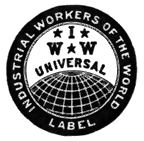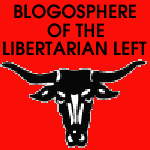The Class Nature of Fascism
Paul Bigioni. "Fascism Then. Fascism Now?"
John Spritzler "Facing History: How Working Class Germans Fought the Nazis, and How Liberal Foundations Lie About It"
Consider the words of Thurman Arnold, head of the Antitrust Division of the U.S. Department of Justice in 1939....
"Germany presents the logical end of the process of cartelization. From 1923 to 1935, cartelization grew in Germany until finally that nation was so organized that everyone had to belong either to a squad, a regiment or a brigade in order to survive. The names given to these squads, regiments or brigades were cartels, trade associations, unions and trusts. Such a distribution system could not adjust its prices. It needed a general with quasi-military authority who could order the workers to work and the mills to produce. Hitler named himself that general. Had it not been Hitler it would have been someone else."....
This was an era eerily like our own, insofar as economists and businessmen constantly clamoured for self-regulation in business. By the mid 1920s, however, self-regulation had become self-imposed regimentation. By means of monopoly and cartel, the businessmen had wrought for themselves a "command and control" economy that replaced the free market. The business associations of Italy and Germany at this time are perhaps history's most perfect illustration of Adam Smith's famous dictum: "People of the same trade seldom meet together, even for merriment and diversion, but the conversation ends in a conspiracy against the public, or in some contrivance to raise prices."
How could the German government not be influenced by Fritz Thyssen, the man who controlled most of Germany's coal production? How could it ignore the demands of the great I.G. Farben industrial trust, controlling as it did most of that nation's chemical production? Indeed, the German nation was bent to the will of these powerful industrial interests. Hitler attended to the reduction of taxes applicable to large businesses while simultaneously increasing the same taxes as they related to small business. Previous decrees establishing price ceilings were repealed such that the cost of living for the average family was increased. Hitler's economic policies hastened the destruction of Germany's middle class by decimating small business.
Ironically, Hitler pandered to the middle class, and they provided some of his most enthusiastically violent supporters. The fact that he did this while simultaneously destroying them was a terrible achievement of Nazi propaganda.
Hitler also destroyed organized labour by making strikes illegal. Notwithstanding the socialist terms in which he appealed to the masses, Hitler's labour policy was the dream come true of the industrial cartels that supported him. Nazi law gave total control over wages and working conditions to the employer.
Compulsory (slave) labour was the crowning achievement of Nazi labour relations. Along with millions of people, organized labour died in the concentration camps....
The same economic reality existed in Italy between the two world wars. In that country, nearly all industrial activity was owned or controlled by a few corporate giants, Fiat and the Ansaldo shipping concern being the chief examples of this.
Land ownership in Italy was also highly concentrated and jealously guarded. Vast tracts of farmland were owned by a few latifundisti. The actual farming was carried out by a landless peasantry who were locked into a role essentially the same as that of the sharecropper of the U.S. Deep South.
As in Germany, the few owners of the nation's capital assets had immense influence over government. As a young man, Mussolini had been a strident socialist, and he, like Hitler, used socialist language to lure the people to fascism. Mussolini spoke of a "corporate" society wherein the energy of the people would not be wasted on class struggle. The entire economy was to be divided into industry specific corporazioni, bodies composed of both labour and management representatives. The corporazioni would resolve all labour/management disputes; if they failed to do so, the fascist state would intervene.
Unfortunately, as in Germany, there laid at the heart of this plan a swindle. The corporazioni, to the extent that they were actually put in place, were controlled by the employers. Together with Mussolini's ban on strikes, these measures reduced the Italian labourer to the status of peasant.
Mussolini, the one-time socialist, went on to abolish the inheritance tax, a measure that favoured the wealthy. He decreed a series of massive subsidies to Italy's largest industrial businesses and repeatedly ordered wage reductions. Italy's poor were forced to subsidize the wealthy. In real terms, wages and living standards for the average Italian dropped precipitously under fascism.
John Spritzler "Facing History: How Working Class Germans Fought the Nazis, and How Liberal Foundations Lie About It"
A popular course for middle and high school students about the Holocaust gives a false account of antisemitism and related events in Nazi-era Germany carefully designed to drive home the lesson that most people are prone to bigotry and are a dangerous force. The course, called "Facing History and Ourselves" (FHAO), is funded by liberal foundations and corporations (and in the past, grants from the U.S. Department of Education) and wealthy individuals. It reaches one million students a year in schools across the country.
The elite installed Hitler as Chancellor because they feared that working class power was getting out of hand, and they were desperate to find a political leader who could lead the upper classes in a ruthless war against the working classes. Standard histories of this period, such as William Shirer's classic The Rise and Fall of the Third Reich, describe how this happened.
Every time Germans had a chance to vote for or against Hitler, the great majority voted against him. Hitler ran for President in March, 1932 and got only 30% of the vote; in the run-off election the next month he got only 37%, versus 53% for the incumbent Field Marshal von Hindenburg. Nazi electoral strength peaked on July 31, 1932 when Nazi rhetoric about representing all Germans and not special interest groups lured some voters away from the numerous small, special-interest conservative parties. The Nazis won 230 out of 608 total seats in the Reichstag (parliament). But their main foes, the Social Democratic Party (SDP) and the Communist Party—both of which were led by Marxists and received mainly working class votes—jointly captured 222 seats in the same election. Voting records show that the richer the precinct, the higher the Nazi vote.
Working class Germans not only voted against the Nazis, they fought them in the streets....
In the next Reichstag election on Nov 6, 1932 the Nazis lost 34 seats, reducing them to only 196 deputies, while the Social Democratic Party and the Communist Party won a total of 221 seats — 25 more than the Nazis. This was the last free election before Hitler came to power....
After this election the Nazis were in steep decline....
And yet, only one month later, President Hindenburg appointed Hitler Chancellor. Industrialists, bankers, large landowners and the military had pressured Hindenburg to appoint Hitler. They feared the growing strength of the working class and were convinced that only Hitler would do whatever was necessary decisively to defeat workers' power.
The elite feared not only working class votes, but a general strike that could lead to civil war. Two months before Hitler's appointment, General Kurt von Schleicher told the current Chancellor, Franz von Papen, "The police and armed services could not guarantee to maintain transport and supply services in the event of a general strike, nor would they be able to ensure law and order in the event of a civil war." When Hindenburg subsequently dismissed Papen and appointed Schleicher as Chancellor, he told Papen: "I am too old and have been through too much to accept the responsibility for a civil war. Our only hope is to let Schleicher try his luck." Schleicher, responding to the same Great Depression and the same kind of working class militancy that forced FDR to offer Americans a New Deal, tried to pacify the German working class with similar promises, but workers didn't trust him. After just fifty-seven days in office the elite decided that only Hitler could do what had to be done.
Twenty-six days before Hitler's appointment as Chancellor, Baron Kurt von Schroeder, a Cologne banker, had a private meeting with Hitler, three other Nazi leaders, and Papen. During this meeting Papen and Hitler agreed that Social Democrats, Communists, and Jews had to be eliminated from leading positions in Germany, and Schroeder promised that German business interests would take over the debts of the Nazi Party....
What Hitler offered the elite was not popularity, but the determination to lead an all-out attack on the working class.
Within two months of being appointed Chancellor, Hitler arrested four thousand leaders of the Communist Party along with others in the Social Democratic and liberal parties and carted them off to be tortured and beaten. On May 2, 1933 Nazis occupied all trade union headquarters, confiscated their funds, dissolved the unions, and sent the leaders to concentration camps; any known working class radicals were put in prison camps or went into hiding. By 1938 tens of thousands of working class leaders were in the concentration camps or prison and hundreds had been killed. Eventually the Nazis rounded up three million political prisoners.
Even after the Nazis took over the government, destroyed the unions, and imprisoned opposition leaders, the German working class fought them....
Later, even with three million political prisoners in the camps, workers still refused to make peace with the regime. Industrialists reported thousands of examples of slowdowns, stoppages, and sabotage, as well as some strikes and mass protest meetings. During the war, the Krupp corporation alone reported to the Gestapo some five thousand examples of such "treason." Most work stoppages, the Nazis believed, were used as a safe way to protest their rule....
In FHAO's book there is no inkling of the mass working class resistance to the Nazis, no hint that Holocaust-era Germany was in a state of extreme class war—a virtual civil war....
In the fantasy world of FHAO the only resistance to the Nazis came from rare individuals.... Ignoring working class battles against the Nazis, FHAO suggests that what little resistance there was came from the upper classes.









2 Comments:
Corporate liberals, by blaming the average person in Germany for Hitler thereby hide the ruling classes important indeed crucial role in Nazism. I suspect this cover up is deliberate, just like they cover up the overwhelming support the ruling class of Britain and the US gave to the Nazis.
That's misleading about Hitler. He and the Nazis were Condorcet winners at relevant times - more popular than any other single group - which was favoured by the Weimar System except when it got its intended result, a parliamentary stitch up that excluded the people even more. Also, after Hitler abandoned the formal democratic process, he did in fact increase in popularity - results of referenda and plebiscites showed that.
The fact that a plutocracy installed him is neither here nor there. He was equally installed by the lower middle classes and non-communist workers (i.e., non-internationalist ones). Sure, he acted against the other groups on behalf of the plutocracy - but also vice versa. The Nazis were the ones who ended up on top, with Hitler on top of them through an intra-party divide and rule (Mussolini eventually failed at that part).
The Nazis and Fascists were notorious for stealing ideas and policies from all over, and for a long time I supposed that Mussolini adopted the coroporate state ideas in that way, to butress his position with the materials he found lying around while still making an appeal that wasn't obviously pro-rich (he also only gave them gains in exchange for their previous independence).
But I found something out when I read Jack London's "the Iron Heel". It shows that such mock-equitable systems were feared among the larger world of socialism even before Mussolini came to power. This suggest that he actually found many of the ideas among socialist fears. It's actually unlikely that the original socialist fear, of a conscious capitalist scheme of subjection, was ever there; but Mussolini installed it from his position.
Oddly enough, similar schemes among socialists to trick and cheat the ruling classes come the revolution were outlined in William Morris's "News from Nowhere". These tricks were headed off in the 1926 General Strike, so presumably people had been paying attention to the threats of black propaganda etc.
Throughout all this, one should understand that classes are emergent constructs, as real yet unreal as vortices in water, and not like constructs like corporations at all.
They should not be thought of as entities, and it is often not useful to think in those terms at all. It's certainly misleading in considering the appeal of Fascism and Nazism, which aimed at and to some extent succeeded in cutting across those demarcations (resulting in something worse, however).
Post a Comment
<< Home